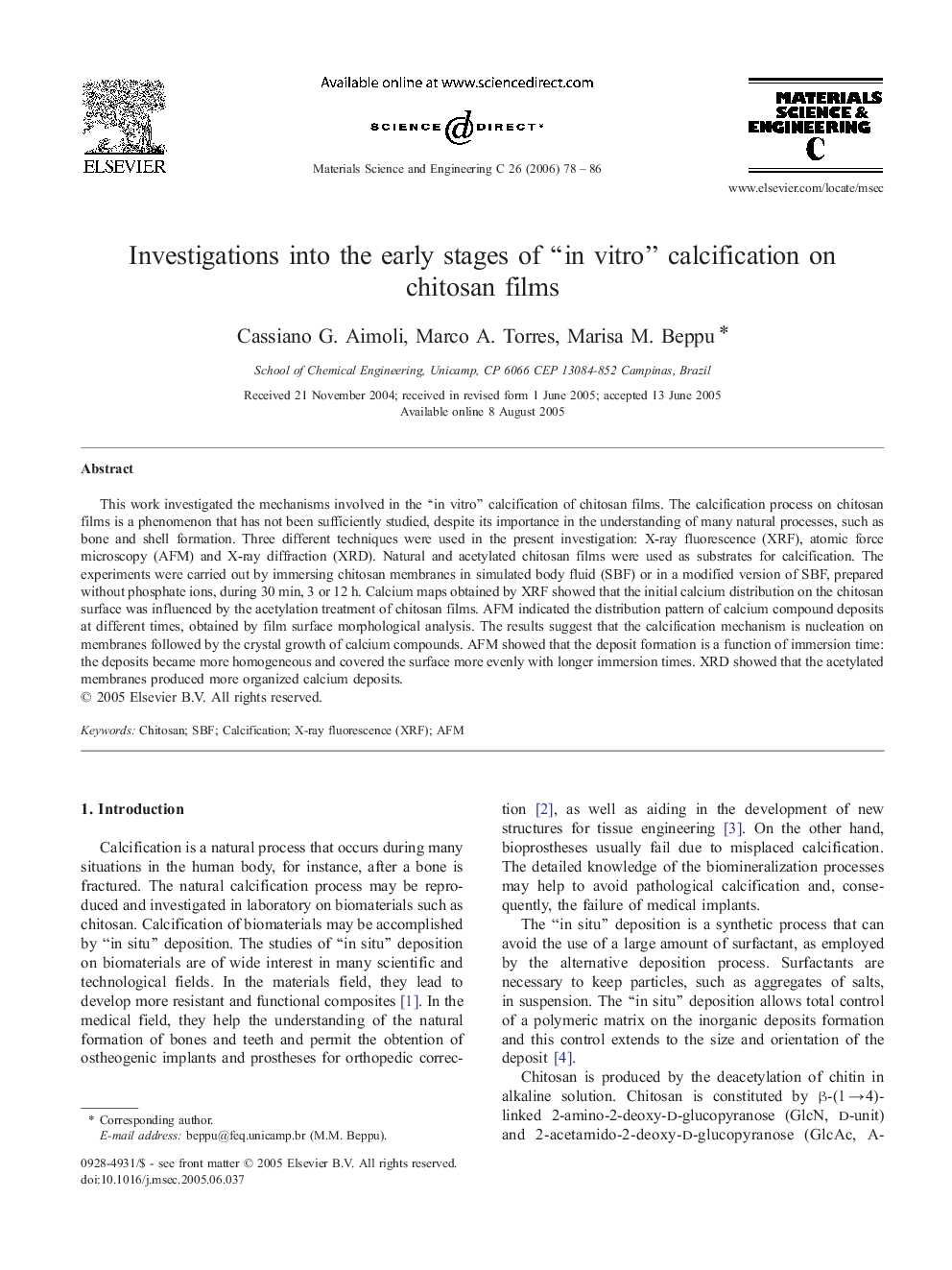| Article ID | Journal | Published Year | Pages | File Type |
|---|---|---|---|---|
| 1430535 | Materials Science and Engineering: C | 2006 | 9 Pages |
This work investigated the mechanisms involved in the “in vitro” calcification of chitosan films. The calcification process on chitosan films is a phenomenon that has not been sufficiently studied, despite its importance in the understanding of many natural processes, such as bone and shell formation. Three different techniques were used in the present investigation: X-ray fluorescence (XRF), atomic force microscopy (AFM) and X-ray diffraction (XRD). Natural and acetylated chitosan films were used as substrates for calcification. The experiments were carried out by immersing chitosan membranes in simulated body fluid (SBF) or in a modified version of SBF, prepared without phosphate ions, during 30 min, 3 or 12 h. Calcium maps obtained by XRF showed that the initial calcium distribution on the chitosan surface was influenced by the acetylation treatment of chitosan films. AFM indicated the distribution pattern of calcium compound deposits at different times, obtained by film surface morphological analysis. The results suggest that the calcification mechanism is nucleation on membranes followed by the crystal growth of calcium compounds. AFM showed that the deposit formation is a function of immersion time: the deposits became more homogeneous and covered the surface more evenly with longer immersion times. XRD showed that the acetylated membranes produced more organized calcium deposits.
